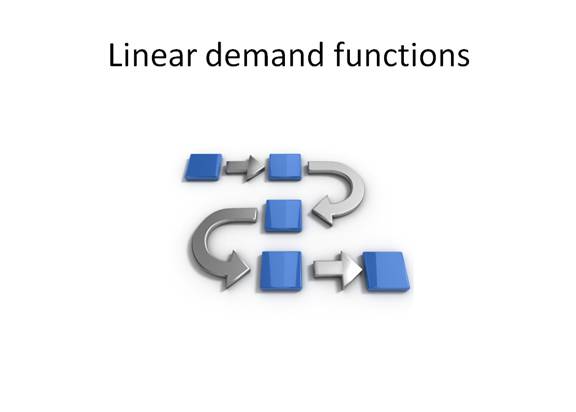Linear demand functions - Paper 3 Calculations HL Only
Syllabus: Linear demand functions (equations), demand schedules and graphsExplain a demand function (equation) of the form Qd = a – bP.
• Plot a demand curve from a linear function (eg. Qd = 60 – 5P).
• Identify the slope of the demand curve as the slope of the demand function Qd = a – bP, that is –b (the coefficient of P).
• Outline why, if the “a” term changes, there will be a shift of the demand curve.
• Outline how a change in “b” affects the steepness of the demand curve.
NB: If `a´ increases (from 60 to 80 say) demand will increase at very price level (shift to the right) and conversely if `a´ decreases (from 60 to 55 say) demand decreases at every price level (shift to the left).
NB: -b is made up of two components the sign (negative) and the number (b)
the negative sign is because of the inverse relationship between price and quantity demanded (Law of demand)
the number indicates the gradient (slope), the bigger the number the less steep (flatter) the demand curve, the lower the number the more steep - can you say why?
Let´s Do Some Economics
Plot 3 chosen demand functions based on Qd = 60 - 5P
Just change the coefficient on P say 10P and 3P
See what happens to the gradient as the coefficent becomes bigger
Confirm the rule: The bigger the coefficient the f------ (---- steep) the demand curve
Just change the coefficient on P say 10P and 3P
See what happens to the gradient as the coefficent becomes bigger
Confirm the rule: The bigger the coefficient the f------ (---- steep) the demand curve
For HL, you need to be able to understand linear demand functions and to be able to calculate demand and plot a demand curve from a demand function. The presentation below goes through this. Click on the screenshot or link below to open the presentation. It will open in a new web window. You will need a headset or speakers to listen to the explanation.

